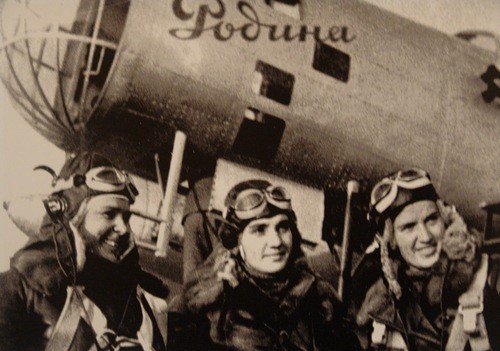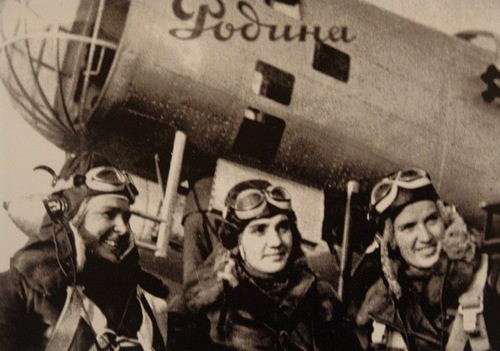The Flower-Loving, Bomb-Dropping “Night Witches” of World War II


Via the Atlantic:
The 588th [Night Bomber Regiment of the Soviet Air Forces] was the most highly decorated female unit in that force, flying 30,000 missions over the course of four years — and dropping, in total, 23,000 tons of bombs on invading German armies. Its members, who ranged in age from 17 to 26, flew primarily at night, making do with planes that were — per their plywood-and-canvas construction — generally reserved for training and crop-dusting. They often operated in stealth mode, idling their engines as they neared their targets and then gliding their way to their bomb release points. As a result, their planes made little more than soft “whooshing” noises as they flew by.
Those noises reminded the Germans, apparently, of the sound of a witch’s broomstick. So the Nazis began calling the female fighter pilots Nachthexen: “night witches.” They were loathed. And they were feared. Any German pilot who downed a “witch” was automatically awarded an Iron Cross.
The Soviet Union was the first to allow women to fly combat missions, and these women flew in tiny crop-duster planes that they decorated with flowers and were so small that they could carry only two bombs at once. Individual women flew up to 18 missions every night, in uniforms that were “hand-me-downs from male pilots. And their planes had open cockpits, leaving the women’s faces to freeze in the chilly night air.”
The Witches (they took the German epithet as a badge of honor) flew only in the dark. Because of the weight of the bombs they carried and the low altitudes at which they flew, they carried no parachutes. They had no radar to navigate their paths through the night skies — only maps and compasses. If hit by tracer bullets, their craft would ignite like the paper planes they resembled.
On July 8, Nadezhda Popova, an early volunteer with the regiment who flew 852 missions in total, died in Moscow. From her New York Times obituary:
“I sometimes stare into the blackness and close my eyes,” Ms. Popova said in 2010. “I can still imagine myself as a young girl, up there in my little bomber. And I ask myself, ‘Nadia, how did you do it?’”